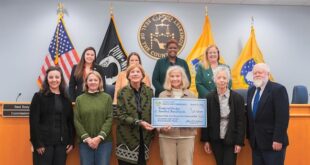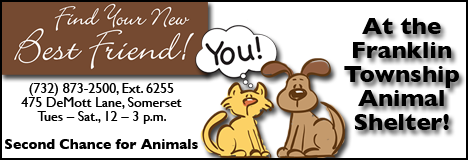
A group of Ham Radio enthusiasts are gathered in a parking area off Route 518 to take part in a two-day annual event that’s a combination festival and competition.
The group, members of the David Sarnoff Radio Club, spent the afternoon of June 28 setting up tents, rigging antennas, and firing up generators in preparation for the event, the American Radio Relay League Field Day.
The event runs through June 29.
The group was one of more than 10,000 Ham Radio operators across the United States and Canada taking part in the field day, said John DeGood, the club’s secretary.
“it’s an exercise just in emergency preparedness to show that with zero infrastructure, you know, we’re just out here in the middle of nowhere with a little portable generator, and some of the rigs are actually running on batteries, so they don’t even need the generator,” he said. “And we can talk to, communicate with other stations around, all over the United States.”
“That’s the significant part,” DeGood said. “It’s about celebrating something that the general public has no clue exists. And that’s what we’re trying to convey, that this does exist. What’s its significance? What’s its benefit? Why should you know?”
Radio operators are “put to the task to try and exercise emergency communication in the field, literally,” said Robert Uhrik, the club’s public information officer. “Take your radios, go out into the middle of the field, and try and communicate with all the other hams all over the country.”
“We’re very happy to partner with Somerset County Parks to let us use this location,” he said. “Everybody’s setting up their radios and ready to talk to other stations set up all over the country, and we log those contacts in, and it’s a kind of a competition, like how many stations, how many other clubs can you talk to all over the country? And it does have that element of emergency preparedness.”
Ham, or amateur, radio is more than just people across the world talking to each other. The networks of radio operators can play a critical communications role in the event of natural or man-made disasters, providing messages between emergency management units while damaged cellular infrastructure is being repaired.
And events such as the field day allow members to hone their skills in preparation for the next disaster.
“The importance of the event is that we get to see what it is that radios can actually do,” said Charlie Dietrich of Kingston, the group’s vice-president. “Because we normally take radios for granted, because it’s our phone, it’s whatever else. But this is what it actually can do. Sometimes it can talk to Georgia, sometimes it can’t. Some frequencies work one way, some frequencies work another way.”
“If we’re going to be innovative in the future, we need to understand all the ins and outs of how radios work,” he said. “It’s also a heck of a lot of fun just to talk to random people all over the country and Canada. And just, you know, just say hi.”

Pennington resident Josh Kozlow was busy in his tent, attempting to make contact with a radio operator using Morse Code.
“He’s trying to talk to somebody in Georgia, but everybody else in the world wants to talk to the same guy,” Dietrich said.
Dietrich said Kozlow was running his transmitter off of a battery.
“We’re not using any power from the power supply from the generator over there,” he said. “And Morse Code takes very little power to get through.”
“You can get all across the country with a watt,” he said. “Smaller than a light bulb, whereas with a phone, you tend to have something more powerful.”
Rebecca Mercuri is the club’s program coordinator and also handles the club’s Make Operating Radio Easier, or MORE, Project. The program is designed to bring in younger radio operators.
“The whole idea of the MORE Project essentially is to shift the demographic so that there are more amateur radio operators who are young to replace people who are unfortunately dying out, and then also to make it not so much all male gender,” she said. “So, a lot of times when you listen on the radio, all you hear is guys, and, you know, it’s, I mean, we have nothing against guys, but we would like it to be a more open demographic.”
“There are a lot more women now getting involved,” she said.
Mercuri was able to secure a $200,000 grant from the Amateur Radio Digital Communications group in California to help the club contribute to the Project.
Each person who secures a Ham operator’s license gets a “get on the air kit,” which consists of a small radio and other equipment, as well as a check to reimburse the person for testing and license fees, Mercuri said.
Anyone interested in pursuing a Ham radio license, or in joining the David Sarnoff club, can get more information by clicking here.
Stay ‘In the Know,’ subscribe to the Franklin Reporter & Advocate!
No other media outlet covering Franklin Township brings you the depth of information presented by the Franklin Reporter & Advocate. Period. We are the only truly independent media serving the Eight Villages.
But we can only do that with your support. Please consider a yearly subscription to our online news site; at $37 a year, it’s one of the best investments you can make for yourself.
To subscribe, please click here.
 The Franklin Reporter & Advocate Eight Villages, One Community
The Franklin Reporter & Advocate Eight Villages, One Community

